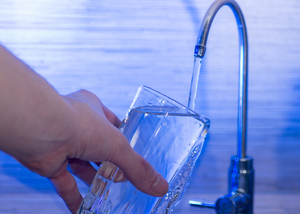Water Quality InformationWritten By Actual Experts
RSSWhat is a "Safe Level" for PFAS in Drinking Water?
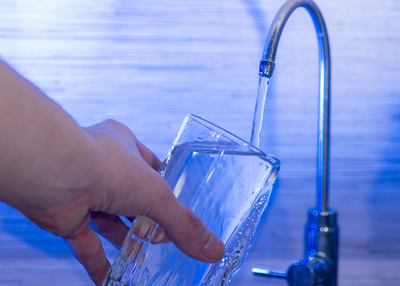
Does My State Regulate PFAS Chemicals in Drinking Water?
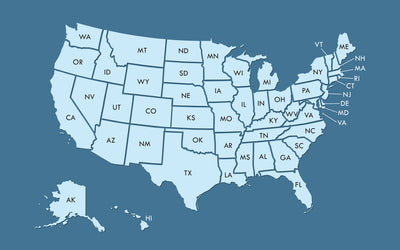
States are responding to the nationwide PFAS crisis by implementing testing or removal requirements in municipal tap water. Per and Polyfluoroalkyl Substances (PFAS) have been detected in an increasingly alarming number of municipalities across the United States. Recent studies indicate that 200 million Americans drink tap water contaminated with PFAS chemicals. On April 10, 2024, the US EPA has announced drinking water standards to limit exposure to 5 types of PFAS chemicals.
PFAS or "Forever Chemicals" in Massachusetts Drinking Water
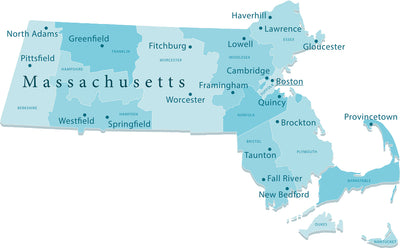
Analies Dyjak, M.A. | Head of Policy
The State of Massachusetts recently implemented new testing requirements and water quality standards for 6 different PFAS variations. PFAS (Per and Polyfluoroalkyl Substances) are a federally unregulated contaminant known to cause adverse health effects, including cancer. These new requirements have forced municipalities to take a closer look at the safety of their drinking water. This article will address what PFAS compounds are, the "safe" levels in Massachusetts drinking water, and water filtration brands that actually remove them.
New PFAS Law in Massachusetts
Massachusetts became one of the first states to adopt drinking water standards for PFAS chemicals in January, 2021. Prior to January of this year, municipal water suppliers throughout Massachusetts were not required to test for PFAS compounds, nor remove them. It's important to point out that PFAS are not a new issue in Massachusetts tap water, and that they have been used in various types of manufacturing since the 1950's. The only major change is that now municipalities are required to test for it.
In October, 2020, the Massachusetts Department of Environmental Protection set an enforceable standard of 20 parts per trillion for the sum of six PFAS compounds in drinking water. The six compounds, called PFAS6, are: PFOS, PFOA, PFHxS, PFNA, PFHpA, and PFDA. This regulation means that if a water sample exceeds 20 parts per trillion for all six compounds, that the municipal provider is in violation of the state law.
What Are Per and Polyfluoroalkyl Substances?
Per and Polyfluoroalkyl Substances (PFAS) are a category of harmful compounds that can be found in drinking water sources across the country. PFAS can take hundreds of years to degrade in the environment which is why you may see them referred to as ‘forever chemicals.’ PFAS are not currently regulated at the federal level, but some states have created regulations or monitoring criteria, including Massachusetts. They are known to increase the risk of cancer, increase cholesterol, increase the risk of miscarriage by 80-120%, and several other negative health outcomes. According to the National Institute of Health, over 4,700 different PFAS variations have been used in some type of manufacturing since the 1950’s. PFAS enter drinking water when they are disposed of in groundwater, surface water, or manufacturing retention ponds.
Is 20 ppt Safe?
There’s a bit of uncertainty around the “safe level” of exposure to PFAS compounds. There are only a handful of studies that assess associated health impacts, and most agree that more research is necessary to make a determination. In 2016, EPA set a non-enforceable Health Advisory Level of 70 parts per trillion for combined PFOA and PFOS. More recent data suggests that this level is far to high to provide meaningful protection against a range of negative health impacts. A more recent study found that a “safe level” or PFAS could be as low as 0.1 parts per trillion. Although the Massachusetts PFAS standard is on the lower end of state limits, our team would rather see even less PFAS allowed in municipal tap water.
Not All Water Filters Remove PFAS
If you live in Massachusetts and you’re looking for a solution, it’s important to understand that not all water filters are able to remove PFAS chemicals. Duke University completed a study in 2020 that tested various filtration brands and their ability to remove PFAS from drinking water. The results found that popular brands including Brita and Pur did not do a good job of removing PFAS compounds. Refrigerator filters tested by the Duke research team, including; Samsung, Whirlpool, and GE, also failed to remove PFAS. The full results of this study can be found here. Hydroviv filters are both NSF certified and third-party tested to remove PFAS chemicals. To request our full testing and removal data, please email hello@hydroviv.com.
Other Articles We Think You Might Enjoy:Yale: PFAS Increase The Risk of Miscarriage by 80-120%
PFAS Update: Spring 2021
Why Do Military Bases Have High Levels of PFAS Chemicals?
PFAS Water Filters for Easton, Massachusetts

Analies Dyjak, M.A. | Head of Policy
Recent testing requirements in the State of Massachusetts have forced local governments to take a closer look at the safety of their drinking water. These new requirements have revealed that Easton, Massachusetts, has elevated levels of PFAS in their tap water. This article will address what PFAS compounds are, the levels in Easton drinking water, and water filtration brands that actually remove them.
PFAS in Easton, Massachusetts
The City of Easton, Massachusetts recently reported that PFAS are present in the city’s drinking water supply. State-level regulations of PFAS chemicals are relatively new, particularly in Massachusetts. Municipal water supplies were not required to even test for PFAS compounds until January 2021, when the state implemented these requirements. Up until that point, people in Easton and many other municipalities in Massachusetts did not know they were being exposed to this potentially cancer-causing chemical.
In October, 2020, the Massachusetts Department of Environmental Protection set an enforceable standard of 20 parts per trillion for the sum of six PFAS compounds in drinking water. The six compounds, called PFAS6, are: PFOS, PFOA, PFHxS, PFNA, PFHpA, and PFDA. This regulation means that if a water sample exceeds 20 parts per trillion for all six compounds, that the municipal provider is in violation of the state law. The table below shows elevated levels of PFAS in Easton source water. A more detailed and thorough analysis of these results can be found on the Easton, MA, website dedicated to PFAS testing.

What Are Per and Polyfluoroalkyl Substances?
Per and Polyfluoroalkyl Substances (PFAS) are a category of harmful compounds that can be found in drinking water sources across the country. PFAS can take hundreds of years to degrade in the environment which is why you may see them referred to as ‘forever chemicals.’ PFAS are not currently regulated at the federal level, but some states have created regulations or monitoring criteria, including Massachusetts. They are known to increase the risk of cancer, increase cholesterol, increase the risk of miscarriage by 80-120%, and several other negative health outcomes. According to the National Institute of Health, over 4,700 different PFAS variations have been used in some type of manufacturing since the 1950’s.
Is 20 ppt Safe?
There’s a bit of uncertainty around the “safe level” of exposure to PFAS compounds. There are only a handful of studies that assess associated health impacts, and most agree that more research is necessary to make a determination. In 2016, EPA set a non-enforceable Health Advisory Level of 70 parts per trillion for combined PFOA and PFOS. More recent data suggests that this level is far to high to provide meaningful protection against a range of negative health impacts. A recent study also found that a “safe level” or PFAS could be as low as 0.1 parts per trillion. Although the Massachusetts PFAS standard is on the lower end of state limits, our team would rather see even less PFAS allowed in municipal tap water.
Not All Water Filters Remove PFAS
If you live in Easton and you’re looking for a solution, it’s important to understand that not all water filters are able to remove PFAS chemicals. Duke University completed a study in 2020 that tested various filtration brands and their ability to remove PFAS from drinking water. The results found that popular brands including Brita and Pur did not do a good job of removing PFAS compounds. Refrigerator filters tested by the Duke research team, including; Samsung, Whirlpool, and GE, also failed to remove PFAS. The full results of this study can be found here. Hydroviv filters are both NSF certified and third-party tested to remove PFAS chemicals. To request our full testing and removal data, please email hello@hydroviv.com.
Other Articles We Think You Might Enjoy:Yale: PFAS Increase The Risk of Miscarriage by 80-120%
PFAS Update: Spring 2021
Why Do Military Bases Have High Levels of PFAS Chemicals?
PFAS Water Filters for Wayland, Massachusetts
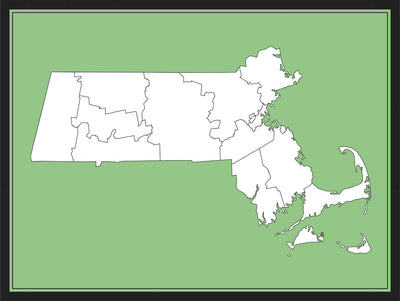
Analies Dyjak, M.A. | Head of Policy
The State of Massachusetts recently implemented new testing requirements and water quality standards for 6 different PFAS variations. PFAS (Per and Polyfluoroalkyl Substances) are a federally unregulated contaminant known to cause adverse health effects, including cancer. These new requirements have forced municipalities to take a closer look at the safety of their drinking water. This article will address what PFAS compounds are, the "safe" levels in Massachusetts drinking water, and water filtration brands that actually remove them.
PFAS in Massachusetts
Massachusetts became one of the first states to adopt drinking water standards for PFAS chemicals in January, 2021. Prior to January of this year, municipal water suppliers throughout Massachusetts were not required to test for PFAS compounds until January 2021, when the state implemented these requirements. Up until that point, people in Wayland did not know they were being exposed to this potentially cancer-causing substance.
In October, 2020, the Massachusetts Department of Environmental Protection set an enforceable standard of 20 parts per trillion for the sum of six PFAS compounds in drinking water. The six compounds, called PFAS6, are: PFOS, PFOA, PFHxS, PFNA, PFHpA, and PFDA. This regulation means that if a water sample exceeds 20 parts per trillion for all six compounds, that the municipal provider is in violation of the state law. The table below shows elevated levels of PFAS in Wayland source water. A more detailed and thorough analysis of these results can be found on the Wayland, MA, website dedicated to PFAS testing.

What Are Per and Polyfluoroalkyl Substances?
Per and Polyfluoroalkyl Substances (PFAS) are a category of harmful compounds that can be found in drinking water sources across the country. PFAS can take hundreds of years to degrade in the environment which is why you may see them referred to as ‘forever chemicals.’ PFAS are not currently regulated at the federal level, but some states have created regulations or monitoring criteria, including Massachusetts. They are known to increase the risk of cancer, increase cholesterol, increase the risk of miscarriage by 80-120%, and several other negative health outcomes. According to the National Institute of Health, over 4,700 different PFAS variations have been used in some type of manufacturing since the 1950’s.
Is 20 ppt Safe?
There’s a bit of uncertainty around the “safe level” of exposure to PFAS compounds. There are only a handful of studies that assess associated health impacts, and most agree that more research is necessary to make a determination. In 2016, EPA set a non-enforceable Health Advisory Level of 70 parts per trillion for combined PFOA and PFOS. More recent data suggests that this level is far to high to provide meaningful protection against a range of negative health impacts. A recent study also found that a “safe level” or PFAS could be as low as 0.1 parts per trillion. Although the Massachusetts PFAS standard is on the lower end of state limits, our team would rather see even less PFAS allowed in municipal tap water.
Not All Water Filters Remove PFAS
If you live in Wayland and you’re looking for a solution, it’s important to understand that not all water filters are able to remove PFAS chemicals. Duke University completed a study in 2020 that tested various filtration brands and their ability to remove PFAS from drinking water. The results found that popular brands including Brita and Pur did not do a good job of removing PFAS compounds. Refrigerator filters tested by the Duke research team, including; Samsung, Whirlpool, and GE, also failed to remove PFAS. The full results of this study can be found here. Hydroviv filters are both NSF certified and third-party tested to remove PFAS chemicals. To request our full testing and removal data, please email hello@hydroviv.com.
Other Articles We Think You Might Enjoy:Yale: PFAS Increase The Risk of Miscarriage by 80-120%
PFAS Update: Spring 2021
Why Do Military Bases Have High Levels of PFAS Chemicals?


